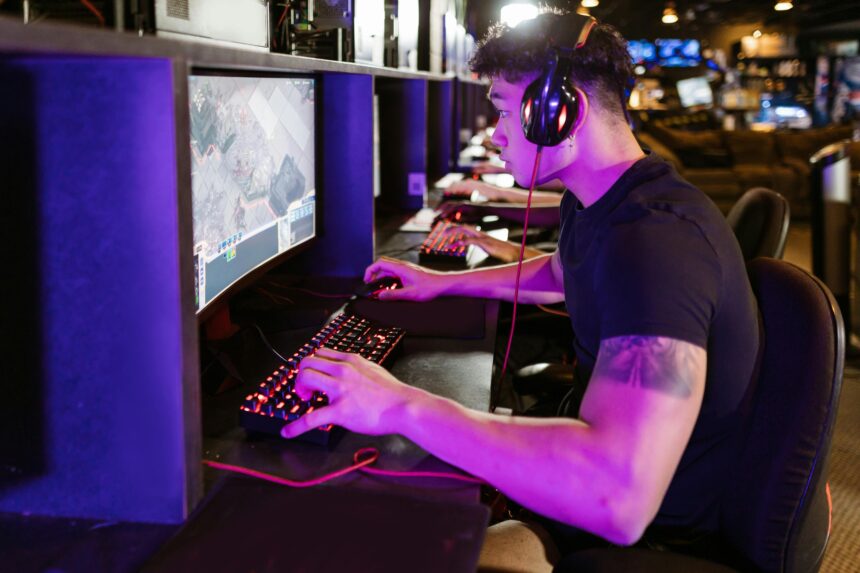The indie arcade game genre has seen a renaissance in recent years, thanks to the rise of digital distribution platforms and the thriving indie game community. Unlike AAA titles with massive marketing budgets, indie arcade games often rely on creativity, innovation, and niche appeal to stand out. But what kind of indie arcade game has the potential for long-term success in the PC gaming niche? In this blog post, we’ll explore key factors that contribute to the enduring success of indie arcade games and identify characteristics that can help an indie arcade game thrive over time.
1. Emphasize Unique Gameplay Mechanics
Innovative Mechanics: Successful indie arcade games often feature unique or innovative gameplay mechanics that set them apart from the competition. This could involve a novel approach to classic arcade genres or entirely new gameplay concepts that capture players’ imaginations.
Example: “Super Hexagon” by Terry Cavanagh offers a unique twist on the rhythm and reflex genres, featuring a fast-paced, hexagonal gameplay environment with a distinctive visual style. Its simple yet addictive mechanics made it a standout hit.
Balancing Complexity and Accessibility: A game with unique mechanics should strike a balance between complexity and accessibility. It should be easy for new players to understand but offer enough depth to keep experienced players engaged.
Example: “Geometry Wars” provides straightforward controls and objectives, but its deep scoring system and challenging enemies keep players coming back for high scores and leaderboard dominance.
2. Craft an Engaging Visual Style
Distinctive Art Direction: Visual style plays a crucial role in capturing players’ attention and setting the tone of the game. A distinctive art direction that stands out from other games can make an indie arcade game memorable and instantly recognizable.
Example: “Katana ZERO” features a unique pixel art style combined with a noir-inspired color palette, creating a visually striking game that stands out in the indie arcade genre.
Consistency and Cohesion: Ensure that the visual style is consistent throughout the game and aligns with the gameplay and narrative elements. Cohesion between art, sound, and gameplay enhances the overall experience and immersion.
Example: “Hyper Light Drifter” utilizes a retro-futuristic pixel art style that complements its mysterious and atmospheric world, enhancing the player’s immersion and enjoyment.
3. Develop a Compelling Score and Progression System
Addictive Scoring Mechanics: Arcade games traditionally emphasize high scores and leaderboards. Implementing an addictive scoring system encourages players to compete for the top spot and provides a sense of accomplishment.
Example: “Pac-Man” and “Donkey Kong” are classic examples of games with simple yet compelling scoring mechanics that keep players engaged for hours.
Progression and Unlockables: Incorporate progression systems and unlockable content to provide players with a sense of achievement and long-term goals. Unlockable upgrades, new characters, or additional levels can keep the game fresh and engaging.
Example: “Enter the Gungeon” features a progression system with unlockable items, characters, and weapons that encourage players to keep playing and exploring the game’s content.
4. Foster a Strong Community and Player Engagement
Build a Community: Creating a strong community around your game can significantly contribute to its long-term success. Engage with players through forums, social media, and community events to build a loyal fanbase.
Example: “Terraria” has a vibrant and active community that contributes to the game’s ongoing success. The developers maintain regular communication with the community, listen to feedback, and involve players in the development process.
Encourage User-Generated Content: Allow players to create and share their own content, such as mods, levels, or customizations. User-generated content can extend the game’s lifespan and keep the community engaged.
Example: “Stardew Valley” supports mods and custom content, allowing players to enhance and personalize their experience, which contributes to the game’s enduring popularity.
5. Offer Accessibility and Cross-Platform Play
Ensure Accessibility: Design your game to be accessible to a wide audience, including players with different abilities and preferences. Consider options like customizable controls, colorblind modes, and adjustable difficulty settings.
Example: “Celeste” includes options for players with different skill levels, including an assist mode that allows players to adjust the game’s difficulty and make the experience more accessible.
Cross-Platform Play: Supporting cross-platform play allows players on different platforms to compete or cooperate together, broadening the game’s reach and increasing its appeal.
Example: “Rocket League” supports cross-platform play between PC, console, and mobile devices, enhancing its multiplayer experience and extending its player base.
6. Leverage Effective Marketing and Promotion Strategies
Create a Buzz Early: Generate excitement for your game early in its development through teasers, trailers, and social media updates. Building anticipation before launch can help create a strong initial player base.
Example: “Hades” built anticipation through early access and frequent updates, engaging the community and generating buzz before its full release.
Participate in Events and Expos: Showcase your game at gaming conventions, expos, and online events to reach a wider audience and gain exposure. These events provide opportunities for networking, media coverage, and player feedback.
Example: “Cuphead” gained significant attention from its appearances at gaming events, where its unique art style and gameplay were showcased to enthusiastic audiences.
Utilize Influencers and Streamers: Partner with influencers and streamers who align with your game’s genre and style. Their gameplay videos and reviews can help reach a broader audience and generate interest in your game.
Example: “Phasmophobia” saw a surge in popularity due to its coverage by popular streamers and YouTubers, which introduced the game to a larger audience.
7. Maintain a Focus on Quality and Polish
Prioritize Quality: Ensure that your game is well-polished and free of major bugs or issues. A high-quality experience enhances player satisfaction and contributes to positive reviews and word-of-mouth promotion.
Example: “Hollow Knight” was praised for its high level of polish, with a well-designed world, tight controls, and minimal bugs, contributing to its critical and commercial success.
Iterate and Improve: Be prepared to iterate and improve your game based on player feedback and performance data. Ongoing updates and refinements can address issues, add new content, and enhance the overall experience.
Example: “Dead Cells” has seen numerous updates and improvements based on player feedback, keeping the game fresh and engaging for both new and returning players.
8. Ensure Longevity with Regular Updates and Expansions
Release Regular Updates: Keep players engaged by releasing regular updates that add new content, features, or improvements. Regular updates help maintain interest and encourage players to return to the game.
Example: “Slay the Spire” regularly adds new characters, relics, and content through updates, keeping the gameplay experience fresh and exciting.
Develop Expansions and DLCs: Consider developing expansions or downloadable content (DLC) to provide additional value and extend the game’s lifespan. Expansions can introduce new gameplay mechanics, levels, or story elements.
Example: “The Binding of Isaac” has released several expansions and DLCs that add new content and mechanics, contributing to the game’s long-term success and continued popularity.
9. Address Market Trends and Player Preferences
Stay Informed about Trends: Keep an eye on industry trends and player preferences to ensure that your game remains relevant and appealing. Adapting to changes in the market can help you stay competitive and attract new players.
Example: The rise of roguelike games has influenced the development of many successful indie titles, including “Hades” and “Enter the Gungeon,” which incorporate popular elements of the genre.
Adapt Based on Feedback: Listen to player feedback and be willing to adapt your game based on their suggestions and preferences. Player feedback can provide valuable insights and help you make informed decisions about future updates and improvements.
Example: “Undertale” received positive feedback for its unique storytelling and gameplay mechanics, leading to continued support and engagement from the community.
10. Build Strong Developer-Player Relationships
Engage with Your Community: Develop a strong relationship with your player base by actively engaging with them through forums, social media, and in-game interactions. Building a positive relationship with players can lead to increased loyalty and word-of-mouth promotion.
Example: The developers of “Stardew Valley” maintain an active presence in the community, responding to feedback and interacting with players to build a strong and supportive fanbase.
Be Transparent and Communicative: Maintain transparency about your game’s development process, updates, and any issues that may arise. Open communication helps build trust and keeps players informed and engaged.
Example: “Factorio” developers regularly communicate with players about updates, development progress, and community feedback, contributing to the game’s ongoing success and positive reputation.
Conclusion
Creating a successful indie arcade game in the PC niche requires a combination of innovative gameplay, engaging visuals, strong community engagement, and effective marketing. By focusing on unique gameplay mechanics, a compelling visual style, and a strong progression system, you can create a game that stands out and captures players’ attention. Building a supportive community, maintaining high quality, and offering regular updates and expansions are essential for long-term success.
As the gaming industry continues to evolve, staying informed about market trends, player preferences, and effective promotion strategies will help you navigate the competitive landscape and ensure that your indie arcade game thrives. With dedication, creativity, and a strategic approach, you can turn your indie arcade game into a lasting success in the PC gaming market.








